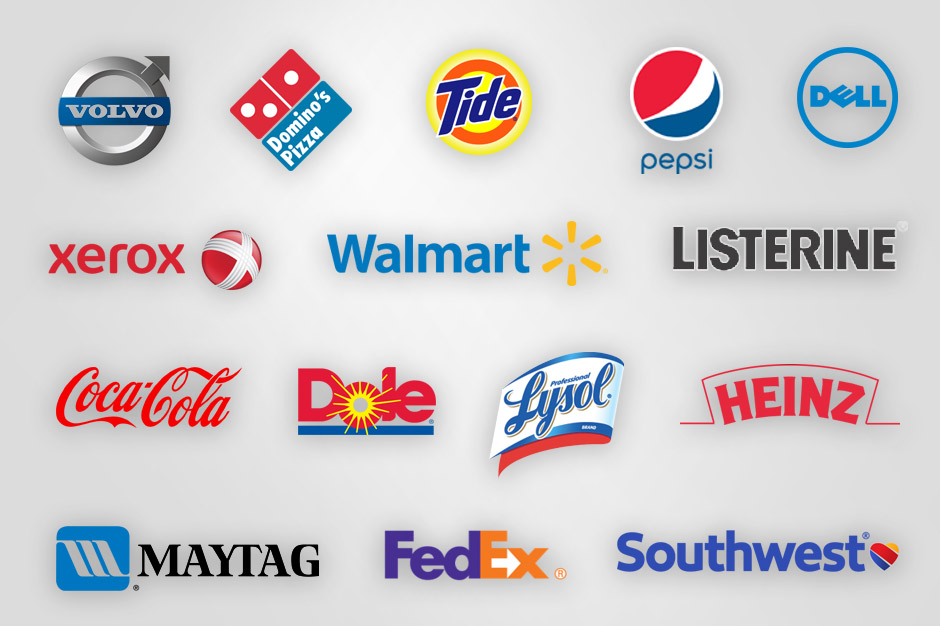The brand is the most important asset that a company has.
Half of Coke's total value is attributable to its brand, over $70 billion. Disney's brand contributes 68 percent to its overall value. McDonald's brand contributes an astounding 71 percent!
A brand is not just the logo or name for a product or service. Brands that are built to express the differentiating idea, inherent to a specific business model and its resulting product, will create value beyond what the product was originally designed to deliver.
Brands that deliver on positioning carry a disproportionate amount of actual business value, resulting in a greater price premium.
There are many ways to go about positioning your company, product, or service.
The following illustrate some of the more common and effective strategies with respect to brand positioning:
Being First
Being first to the mind with a new idea is much easier than convincing someone you have a better product than the one that did get there first.
Attribute
An attribute is a characteristic, peculiarity, or distinctive feature. You can't own the same attribute or brand positioning that your competitor owns. You must seek another attribute to own. It is much better to be narrow and specific because specifics sell; generalities do not. As examples, Crest fights cavities and Listerine kills germs.
Leadership
Leadership is the most powerful way to position a brand. Xerox owns copiers, Heinz owns ketchup, and Hershey is the chocolate leader just as Campbell's is with soup.
Heritage
Heritage and trust work together. Coca-Cola's brand positioning is the "original." It is extremely difficult to top an original! Pepsi figured out a viable approach, though, when they went against the original with the "younger generation" position.
The Specialist
Consumers are impressed with brands that concentrate or focus on a specific activity or product, the specialist brand position. In retail, department store generalists are in trouble today. The big successes are specialists such as Victoria's Secret, Crate & Barrel, and Bed, Bath & Beyond.
Preference
People look for social proof and affirmation. Tylenol built its business by saying it is the pain reliever hospitals prefer. Testimonial campaigns leverage the preference brand position. Nike built its business around the idea that famous athletes prefer to use their sneaker.
Low and High Price
Low price is a positioning idea. While this is not an attractive brand position for most, Wal-Mart and Southwest Airlines have become very powerful and profitable brands. High price can also be a position as seen in brands like Häagen-Dazs.
Being the Latest and Hottest
People have become accustomed to the "next generation" of products. Rather than trying to be better, it is best to leapfrog to the "next."
Distribution Channels, Size, Create a New Category, and More
Avon went door-to-door. L'eggs Pantyhose was the first pantyhose sold in a drugstore. Timex was the first watch sold in a drugstore. Dell sells computers direct online. Volkswagen, with their tagline "Think Small," made the small, cool cars, and GM made the big cars. Seven-Up invented a new sub-category with the Uncola. Miller flanked the industry with Miller Lite. Considering that the market for a light beer was zero, this was a bold move. These are just a sampling of the innumerable innovative ways to differentiate.
While the following examples are consumer products, positioning works in just the same way with companies selling to other businesses and in local, national, or global markets. Here are some examples of positioning ideas:
-
- Volvo - safety (owning a benefit)
-
- Domino's Pizza - delivery (a benefit and a form of distribution)
-
- Wal-Mart - low price (in the retail industry)
-
- Southwest Airlines - low price (in the airline industry)
-
- Xerox - copiers (product positioning)
-
- Dole - pineapples (positioning a commodity!)
-
- FedEx - overnight delivery
-
- Dell - buy computers direct (owning a form of distribution)
-
- Maytag - dependability (owning a benefit)
-
- Coke - original (heritage)
-
- Pepsi - younger generation (an "against" position, against the "original")
-
- Listerine - kills germs (in your mouth)
-
- Lysol - kills germs (in your bathroom)
-
- Heinz - ketchup (an example of owning a category)
-
- Tide - whitening power (owning a benefit)
Two brands cannot share the same positioning, at least not in the same category. Here's an example of how brands within the same category, in this case toothpaste, learn to coexist successfully:
-
- Crest - fights cavities
-
- Aquafresh - tartar control
-
- Close-Up - fresher breath
-
- Colgate - whitening
Thus, the fundamental principle of positioning is that a brand can only stand for one thing in the prospect's mind. A brand is the customer's gut feeling about a product, service, or company: in many ways, the brand (not the marketing tagline) is the perceived personality of the product or service.
Dick Maggiore is Innis Maggiore's President & CEO.



